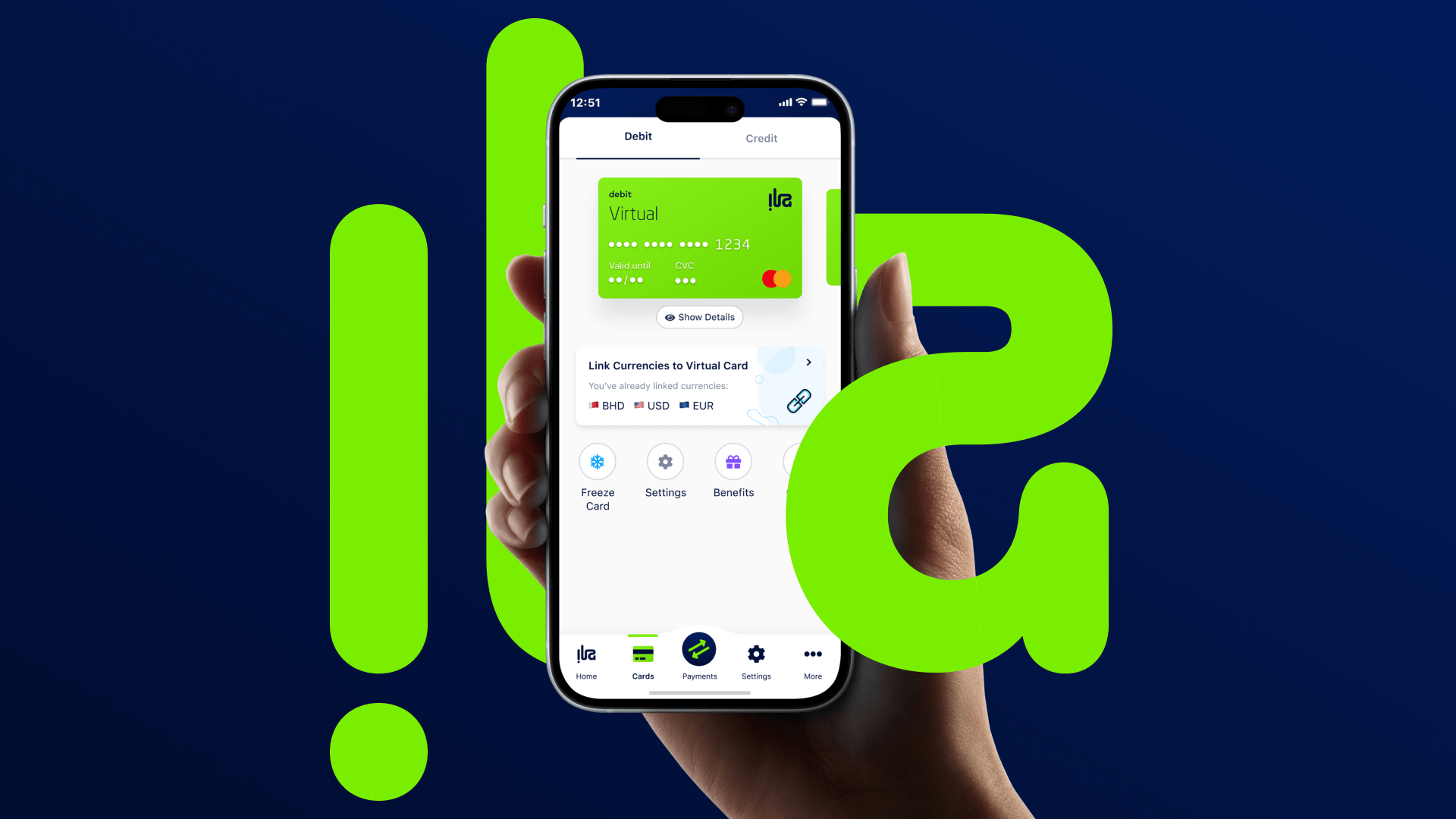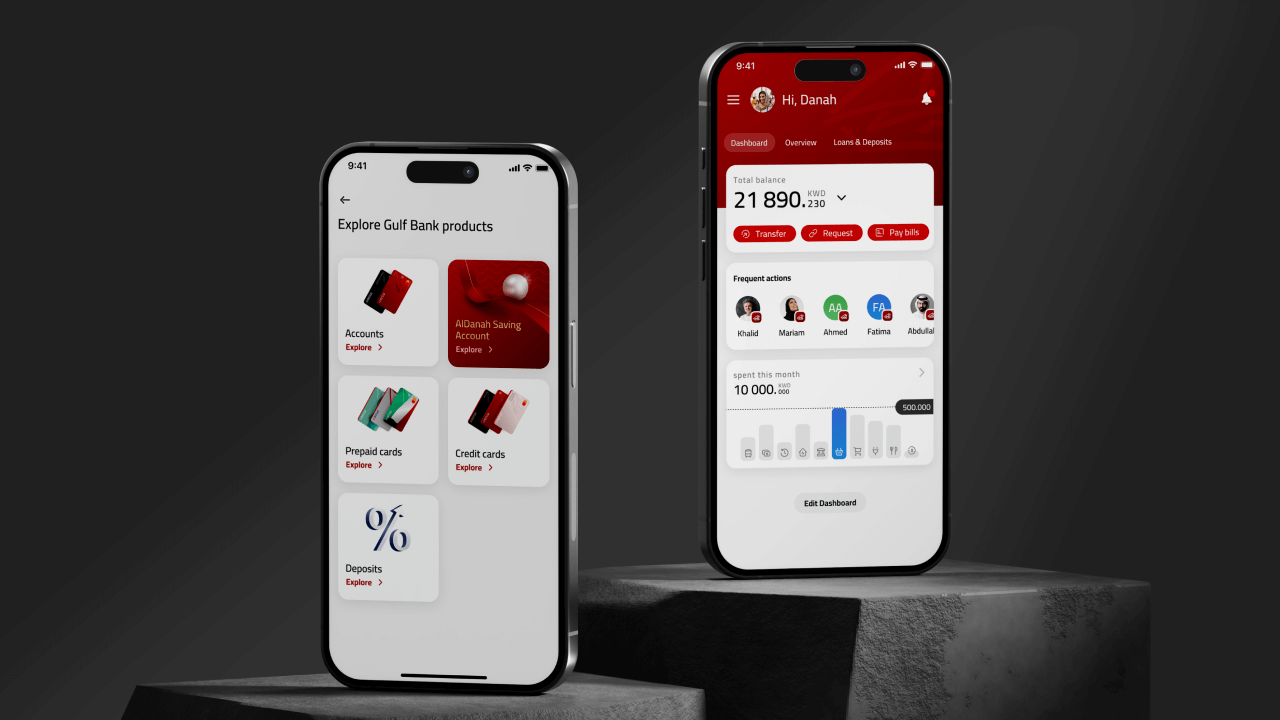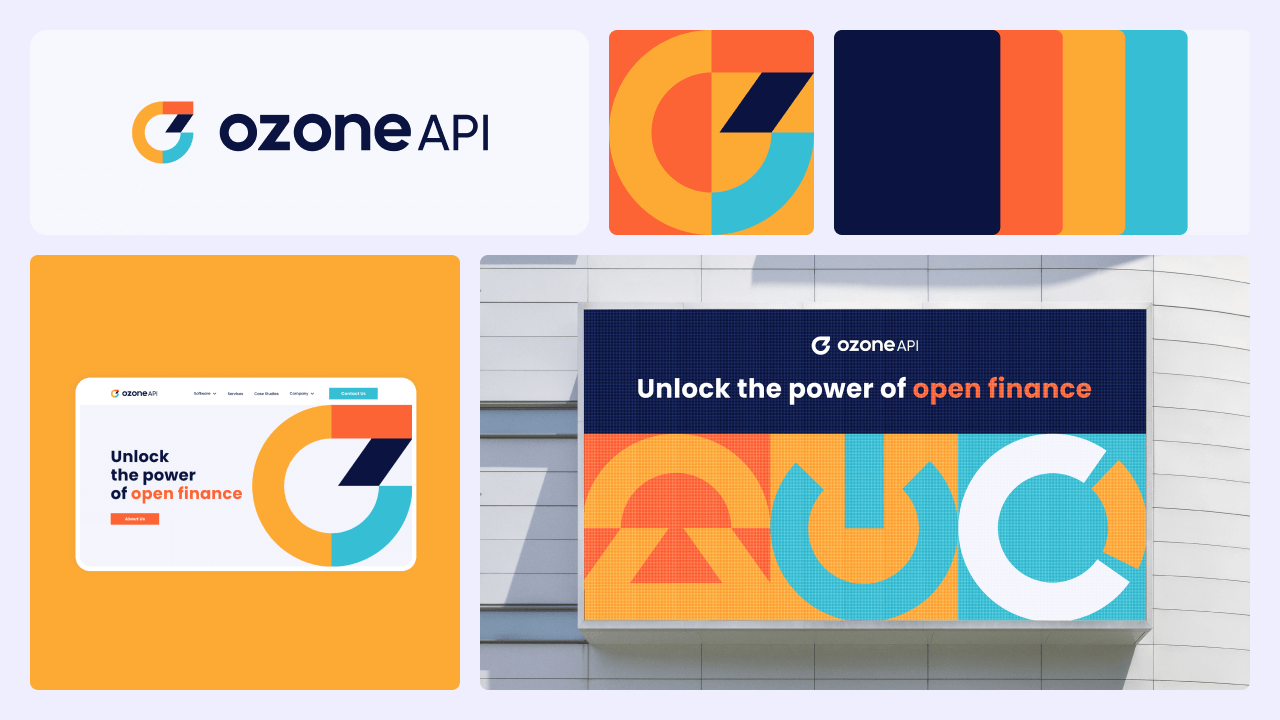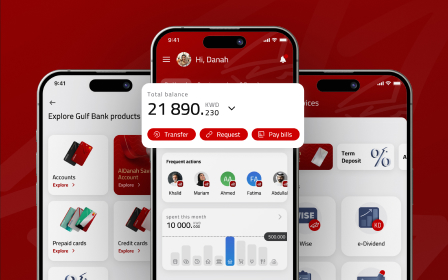Hiring a UX Team: Its Critical Role in Digital Innovation

- What is a UX Team?
- What is the Strategic Role of a UX Team in Business Success?
- The Core Roles within a UX Design Team
- Crafting the Optimal UX Team Structure
- How to Choose Your All-Star UX Design Team
- What Makes a Good UX Team Depending on Your Project Stage?
- Conclusion
- How Qubstudio UX Team Can Help Your Project
In the digital age, the battleground of business has shifted online, with the user experience (UX) of digital products and platforms increasingly dictating success.
With high competition and a demanding user base, businesses are turning to specialized UX design teams to drive innovation and deliver seamless digital experiences. If you’re a technology innovator, business owner, or C-level executive navigating this terrain, understanding the value of a top-notch UX team is not only beneficial—it’s critical.
We, as the digital product agency, believe that the alchemy of success and innovation in UX design is achieved through a curated synergy of creativity, strategic thinking, and a profound understanding of user behavior. To achieve that, you need to find the perfect team first.
Welcome to the in-depth exploration of how a user experience team can transform your digital innovation strategies, and what you should look for when assembling your very own cadre of user experience champions.
Delving into the World of UX Teams: What is a UX Team?
Before we can assemble the dream team, we need a deep understanding of what a UX team is.
Simply put, a UX team is a group of professionals dedicated to enhancing the interaction between a user and a product, ensuring its effectiveness and ease of use. This team encompasses a variety of roles, each with its unique responsibility to craft a user-centric product.
A high-performing UX design team doesn’t just design; they strategize and innovate. They are at the forefront of user research, interface prototyping, and continuous improvement, designing experiences that keep users coming back. Their insights guide the digital innovation process from conception to launch, and beyond.
Let’s explore the strategic significance of the user experience team in driving business success, backed by examples.
What is the Strategic Role of a UX Team in Business Success?
Through a deep understanding of user behavior and needs, UX experts not only enhance product development but also fuel long-term business growth and market disruption. Let’s explore it in more details.

The Impact on Business Success and Digital Innovations
The influence of a user experience team extends far beyond creating user-friendly interfaces; it directly contributes to substantial business success and drives digital innovations.
Through a deep understanding of user behaviors, preferences, and pain points, UX experts can identify unmet needs and areas for disruption, catalyzing innovative solutions and new market opportunities.
The strategic integration of UX practices within the project life cycle is not just an investment in product development, but a decisive factor in achieving long-term business success and shaping the trajectory of digital innovation.
At Qubstudio, we had the privilege of partnering with the ila Bank, a trailblazer in the digital banking sector across the MENA region. Based on the insights our UX team received on user behavior and preferences, as well as the client’s needs and vision, we helped them to innovate in the financial sector with enhanced digital banking features.

Enriching User-Centric Product Development
By placing the user at the very core of the digital product development process, UX teams facilitate a heightened level of customer satisfaction, which translates into increased engagement and loyalty.
This user-centered approach acts as a catalyst for digital innovations, pushing businesses to not only meet the current market demands but to anticipate future user needs.
During our cooperation with Gulf Bank, we aimed not to do a standard banking app redesign, but to create a new customer experience within the specificity of market traditions and its regulatory requirements.
As a result, our UX design team has successfully strengthened user trust in the banking app by enhancing the onboarding processes, tone of voice, and overall user experience.

Driving Competitive Differentiation
The UX team’s expertise in crafting experiences contributes significantly to setting a business apart in the crowded digital marketplace.
By focusing on delivering unique, memorable designs, a business can distinguish itself, creating a competitive advantage that is hard to replicate. This differentiation is crucial in today’s fast-paced market where user expectations are constantly evolving.
Our collaboration with Ozone API, an open banking UK pioneer, involved a complete overhaul of their branding and website design, breathing new life into their digital presence. This refreshed look and feel allowed Ozone API to distinguish itself in the competitive fintech landscape, ensuring that its corporate identity resonated consistently across all touchpoints.

Now, that we understand the role of UX teams in crafting digital success stories, let’s take a closer look at the structure of these teams to fully understand their dynamics.
The Core Roles within a UX Design Team
A champion UX team isn’t a monolith. It’s a sophisticated ensemble of roles, each bringing their unique touch to the user experience symphony. Here’s a spotlight on the key members of a design team.

Business Analyst
A liaison between the UX team and the business, the Business Analyst ensures that the UX strategies align with the organization’s broader objectives. They also play a crucial role in defining the project’s scope and requirements.
UX Designer
The UX designer focuses on the user experience, creating wireframes, mockups, and prototypes to conceptualize the user flow. They are concerned with both the macro and micro-interactions within a product.
UI Designer
While UX deals with the overall experience, the UI (User Interface) Designer is focused on the product’s look and feel. This role ensures that the product is aesthetically pleasing, consistent, and on-brand to foster a positive emotional connection with the user. When looking to hire a UI designer, it’s crucial to assess their proficiency in creating visually appealing interfaces that enhance user interaction and engagement.
Product Designer
Product Designers are responsible for the holistic understanding of design problems and developing elegant solutions. They collaborate closely with both UX and UI designers to ensure a seamless connection between function and form.
Project Manager
The Project Manager is the conductor of the UX design orchestra. They coordinate resources, manage timelines, and ensure that the project stays on track, on budget, and delivers the desired results.
Client Partner
This role fosters healthy client relationships and advocates for the optimal user experience within the project.
UX Writer
The UX Writer focuses on every piece of text the user interacts with. From microcopy to FAQs, the UX writer ensures that language aligns with the UX strategy, contributing to a cohesive and delightful user experience.
In the symphony of UX design, each member of the team plays a vital, distinct role, yet their true power lies in harmony.
Just like an orchestra where every instrument contributes to the overall performance, in UX design, the synergy between roles ensures that the product not only meets the functional requirements but also resonates emotionally with users.
Crafting the Optimal UX Team Structure
There isn’t a one-size-fits-all structure for a UX team; it largely depends on the organization’s size, the scale of the project, and its unique needs. Here’s a brief overview of three commonly used methods.
Centralized
Under this model, the entire UX team operates as a single, centralized unit. It promotes a strong sense of identity and collaboration among team members.

Embedded or Decentralized
In an embedded structure, UX team members are distributed across different business units, working directly with the teams they’re serving. This approach enables a more focused and dedicated service, tailored to individual business objectives.

Matrix
A matrix structure combines elements of both centralized and embedded models. UX team members are centralized but report to both a manager within the UX department and to the customer-facing units they collaborate with. This approach provides the benefits of a unified UX team while remaining responsive to various business needs.

There isn’t a one-size-fits-all structure for a user experience team, as it largely depends on the organization’s size, project scale, and unique needs.
After establishing the foundation of your team structure, you can delve into selecting the perfect outsourced UX design team to bring your vision to life.
How to Choose Your All-Star UX Design Team
If you’re looking to hire UI/UX designer and select the perfect outsourced team to bring your vision to life isn’t merely a task—it’s a journey toward crafting unforgettable digital experiences. In navigating this landscape, knowing where to look and what criteria to consider can make all the difference.
When you’ve pinpointed potential teams, evaluating them involves several crucial criteria.
Portfolio and Case Studies
A strong portfolio not only showcases design skills but also problem-solving capabilities. Look for detailed case studies that highlight their process, solutions, and impact.
Customer-Centered Approach
Your chosen team should emphasize understanding user needs and behaviors. Look for those who prioritize user research and testing throughout their design process.
Cultural Fit
The team’s working style and values should align with your organization’s culture. A harmonious relationship fosters creativity and innovation.
Specialized Skills and Experience
Depending on your project’s specific requirements and stage, you may need a team with expertise in certain areas, like mobile app design, the fintech industry, or enterprise software.
Exploring further, we’ll uncover the specific expertise your project might need, depending on its stage of development.
Which UX Team Do You Need Depending on Your Project Life Cycle?
The lifecycle of a project demands different focuses and strategies at each stage to ensure success. The UX team’s understanding of the requirements of each stage can significantly enhance the efficiency and impact of your efforts.

Stage 1. Ideate & Shape
During the initial phase of a project, especially for startups or new concepts, focus on validating and shaping the idea. Involving a dedicated business analyst is crucial for understanding feasibility and potential impact.
Services like design sprints & workshops help generate solutions quickly. Creating concepts & prototypes is key for visualizing ideas and gathering feedback to ensure a solid foundation before development.
Stage 2. Create & Launch
When it’s time to turn your idea into a real product or project, the focus shifts to effectively crafting and launching it in the market.
Key steps include proper prioritization and a strategic launch strategy. Involving expert designers and business analysts tailored to your project’s requirements will help smoothly transition from concept to launch.
Stage 3. Grow & Scale
For projects that have completed the initial launch phase and aim to expand, the key focus should be on refining and enhancing the product or service based on user feedback and market demands.
Critical areas of focus at this stage include auditing and researching to identify areas of improvement and innovation opportunities, revamping the product for an improved user experience, and continuously adding value through enhancements and innovation to maintain competitiveness.
Success at each stage is driven by an empathetic understanding of users, a clear vision of project goals, and collaborative efforts across diverse teams.
Mistakes to Avoid When Hiring a UX Design Team
Hiring the right team is a critical decision that can significantly influence the success of your project. In this pursuit, there are several common pitfalls that organizations often encounter.
When aiming to hire a UX designer or a team, it’s essential to focus on their specific expertise to ensure you partner with a team that truly aligns with your vision and goals.
Overlooking Team Dynamics
It’s essential to consider how a design team collaborates internally and with your stakeholders. A cohesive team with strong communication skills is likely to be more innovative and efficient.
Focusing Solely on Aesthetics
While a visually appealing portfolio is important, it’s crucial to look deeper into how the team addresses user needs and solves problems. Effective UX design is not just about how a product looks but how well it functions.
Not Setting Clear Expectations
Without clear communication about your project’s scope, timelines, and outcomes, your collaboration could encounter obstacles. Ensure the team understands your expectations to align efforts towards your vision.
Disregarding User Research
Skipping through user research might result in overlooking crucial insights that inform design decisions. Understanding user behaviors and preferences is key to crafting successful digital products.
Forgetting User Testing
Overlooking user testing phases can result in launching a product that doesn’t resonate with the target audience. Regular user testing helps validate design choices and ensures the product meets user expectations.
By consciously steering clear of these errors, you position your project for greater success.
Conclusion
In navigating the complexities of creating and scaling a digital product, the importance of a cooperative, skilled, and empathetic UX design team cannot be overstated.
By recognizing the importance of team dynamics, specialized expertise, and an iterative design process, projects can exceed user expectations and achieve success in the competitive digital landscape.
If you’re looking to hire a UI/UX designer or a team, user research, testing, and cross-functional collaboration is key to ensuring sustainable growth and delivering exceptional digital experiences.
How Qubstudio UX Team Can Help Your Project
Qubstudio stands at the forefront of UX design, equipped to accompany and guide projects through each crucial stage. Our team is adept at navigating the intricacies of digital product creation, from validating initial concepts to scaling robust platforms.
With a profound understanding of the importance of empathy in design, specialized expertise across various industries, and a commitment to collaborative innovation, we aim to transform your visionary ideas into tangible, impactful digital experiences.
Partnering with Qubstudio means engaging with a team that not only shares your vision but is passionately committed to actualizing it.
Ready to bring your ideas to life? Let’s collaborate!
FAQ
Why hire a UI/UX team?
Hiring a UI/UX team is pivotal for creating digital products that are not only visually appealing but also user-friendly and tailored to meet the specific needs of your target audience.
A specialized team brings a wealth of expertise and perspective to the table, ensuring that every aspect of the user’s interaction is considered and optimized for engagement, usability, and satisfaction.
How to manage a UX team?
Managing a UX team effectively involves clear communication of project goals, ensuring the team has the resources and knowledge needed to perform their tasks, and fostering a collaborative environment.
If you intend to hire UI/UX designer or design team for your project, then a skilled project manager will oversee progress, ensure timely delivery, and foster communication between you and the design team.
PMs play a crucial role in managing the team’s workload, distributing tasks based on each member’s expertise, and keeping the project aligned with the client’s vision and goals.



